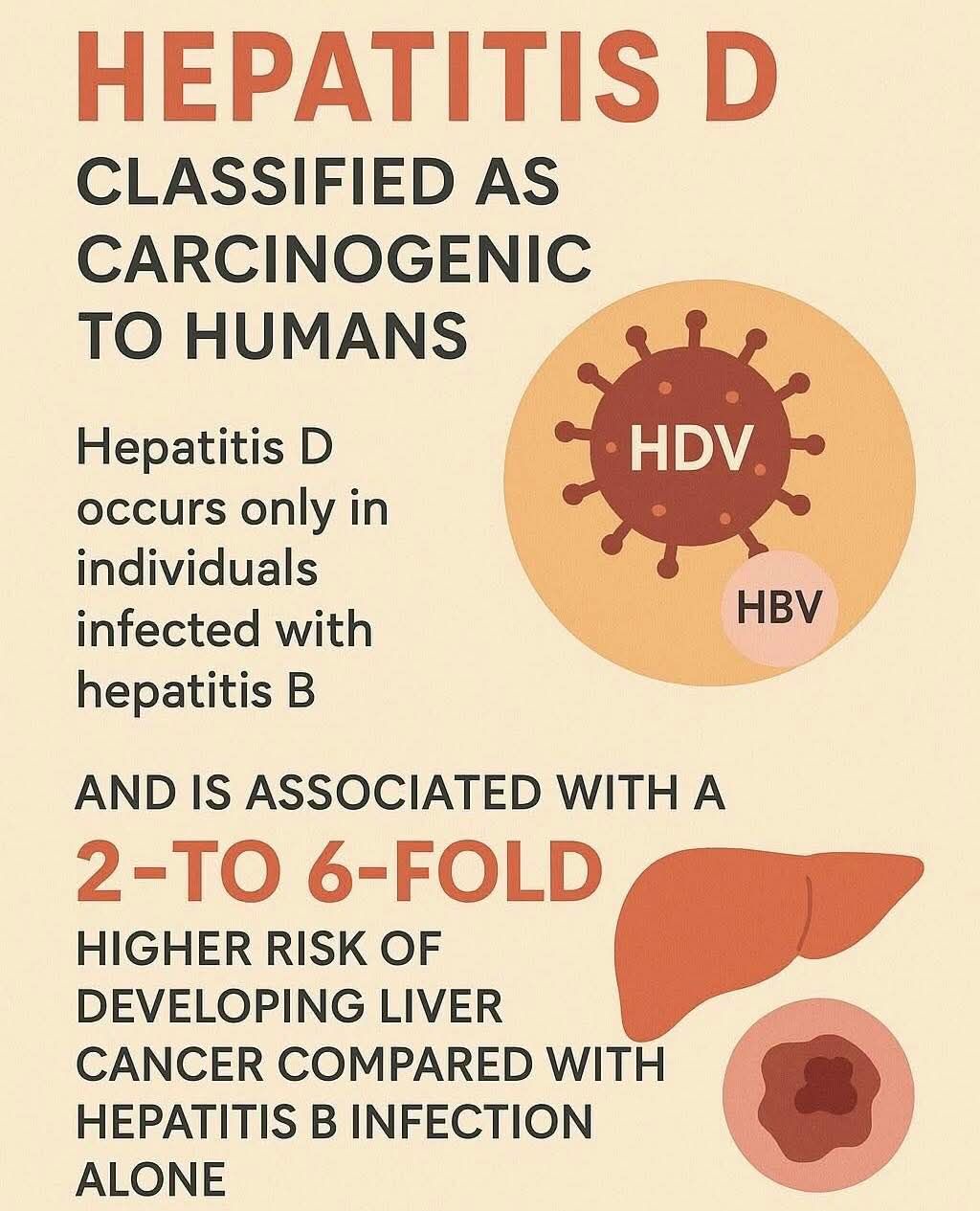Context:
The World Health Organization (WHO) has officially classified the Hepatitis D virus (HDV) as carcinogenic, meaning it has the potential to cause cancer, particularly liver cancer. The WHO’s announcement stems from the International Agency for Research on Cancer’s (IARC) reclassification of hepatitis D as carcinogenic, supported by data from a study published in ‘The Lancet Oncology.’
About Hepatitis D and why is it dangerous?
- Hepatitis D is a serious liver infection caused by the HDV. However, HDV is a defective virus—it cannot infect on its own and requires the Hepatitis B virus (HBV) for replication. Therefore, Hepatitis D only affects individuals already infected with Hepatitis B.
This co-infection is highly dangerous. - HDV spreads similarly to HBV and Hepatitis C—through blood transfusions, unsafe injections, sexual contact, and mother-to-child transmission. Diagnosis is done via HDV-RNA blood tests that detect specific antibodies.
- Studies show that patients with both HBV and HDV are 2 to 6 times more likely to develop liver cancer than those with HBV alone. Additionally, about 75% of HDV-infected patients may develop liver cirrhosis within 15 years.
Why the Hepatitis B Vaccine is Crucial:
- Since HDV requires HBV to replicate, preventing HBV through vaccination also prevents HDV. The Hepatitis B vaccine, included in India’s national immunisation programme, is key. Unfortunately, the coverage rate is only 50%, leaving many vulnerable.
- The vaccine is administered in three doses: at birth, 1 month, and 6 months. Catch-up vaccination is also possible for adults, especially those at high risk.
About Viral hepatitis:
Viral hepatitis is liver inflammation caused by viruses, with five main types: A, B, C, D, and E. Hepatitis A and E spread via the fecal-oral route, usually through contaminated food or water, and are typically acute infections.
· Hepatitis B and C are transmitted through infected blood or body fluids and can become chronic, leading to cirrhosis or liver cancer. Hepatitis D occurs only in people with hepatitis B and worsens liver disease.
· Vaccines are available for hepatitis A and B, and B vaccination also prevents hepatitis D. Hepatitis C lacks a vaccine but has effective treatments. Hepatitis E prevention depends on sanitation.
Conclusion:
WHO’s classification of Hepatitis D as carcinogenic highlights the urgent need for increased Hepatitis B vaccination, especially in vulnerable populations. It will likely lead to enhanced global surveillance, research funding, and public health initiatives aimed at reducing liver cancer cases caused by HBV-HDV co-infection through prevention, early detection, and safer healthcare practices.







